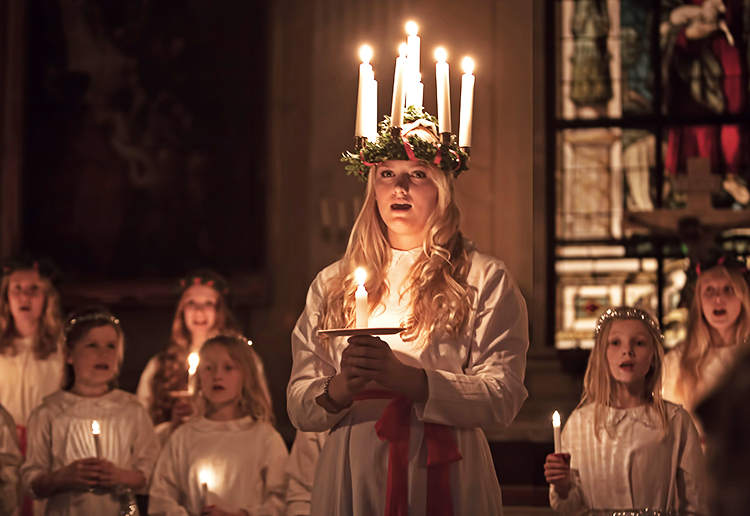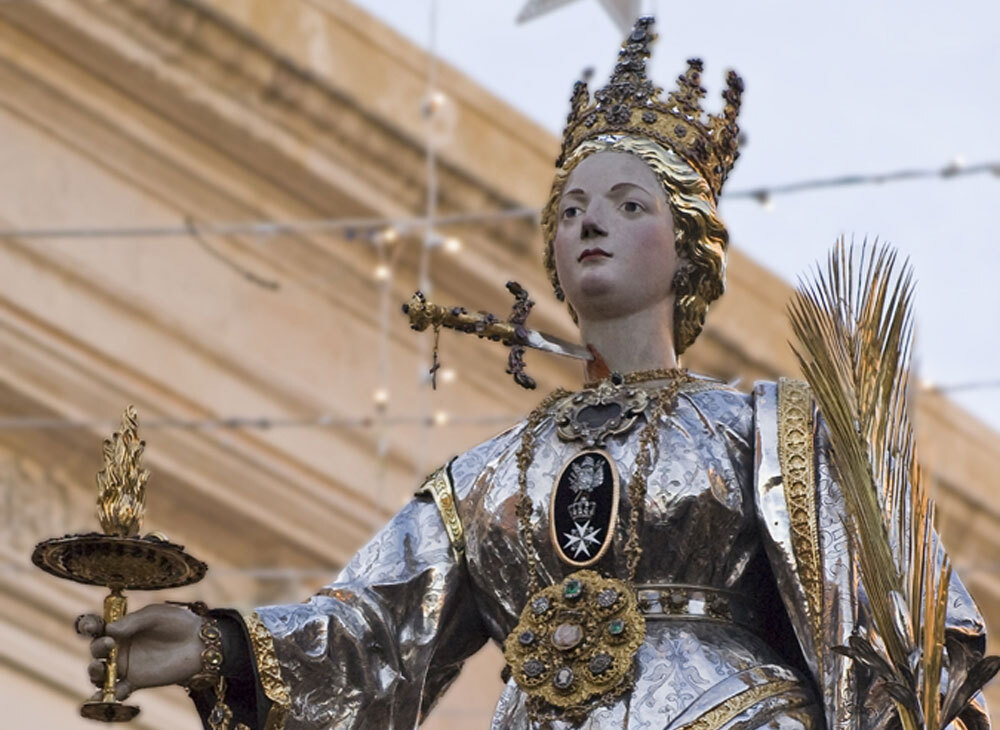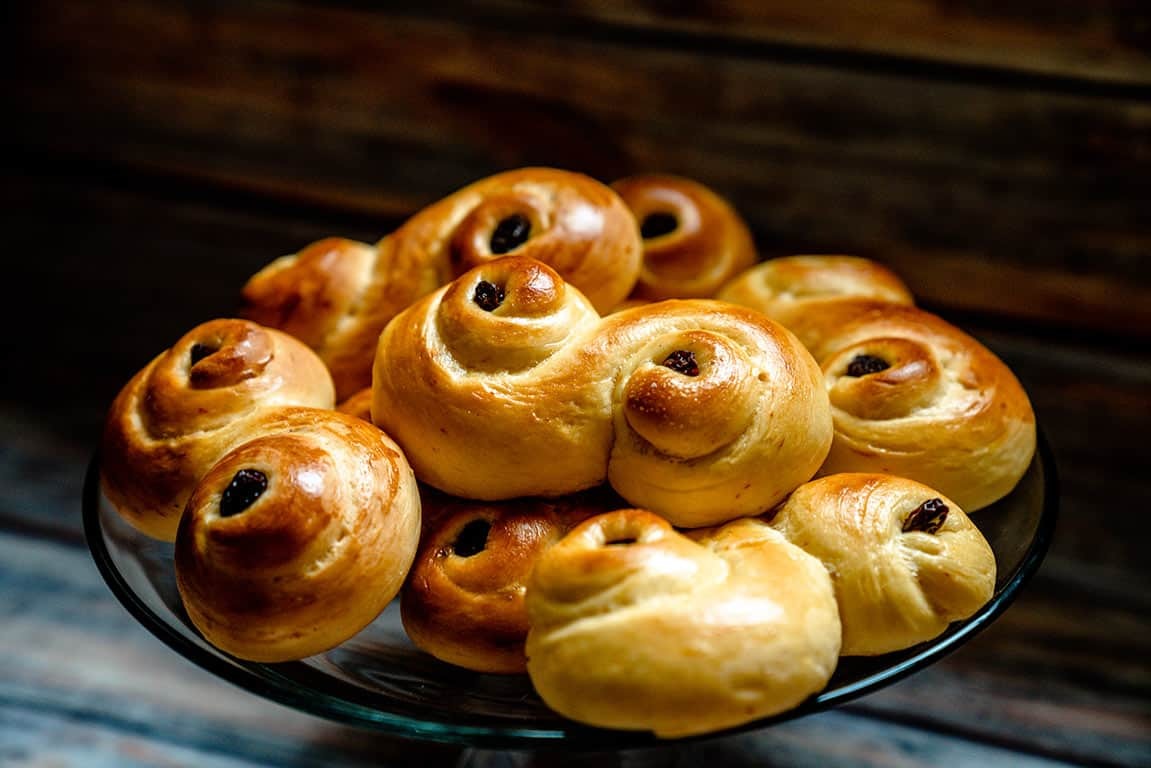
Saint Lucia's Day
Where It's Celebrated: Sweden and other Scandinavian countries, parts of Italy
Date(s) Celebrated: December 13th
Saint Lucia's Day, also known as Saint Lucy's Day or the Feast of Saint Lucy, is a Christian holiday celebrating and commemorating Saint Lucia. According to legend, she brought food and aid to Christians hiding in the Roman catacombs, wearing a candle lit wreath on her head to light her way and leave her hands free to carry as much food as possible. Today in Scandinavian countries as well as parts of Italy, she is celebrated and commemorated on this most special holiday signifying the beginning of the Christmas season.
Traditions

- Tradition 1 - Lucia Procession: Each year, Scandinavian towns appoint a young woman to be the Lucia designee to lead the traditional procession. She is followed by young girls dressed in white with wreaths on their heads singing traditional songs, but the designated Lucia is the only one whose wreath is lit with candles.
- Tradition 2 - Luciadagen: Families celebrate at home with a large feast, beginning the day with their eldest daughter dressed in white to serve the family coffee and baked goods.
- Tradition 3 - Letters to Lucy: In the parts of northern Italy where this holiday is still observed, there are a few unique traditions. According to their legend, Saint Lucy visits the homes in the area on December 13th, riding a donkey and leaving behind gifts for all the good children. In anticipation, children write letters to Lucy a week before letting her know what gifts to bring.
Symbolism

- Symbol 1 - The Torch: Pictured above is a statue of Saint Lucia herself, the patron saint of light. She is depicted with a flamed torch, symbolizing the night she travelled the dark Roman catacombs handing out food to the Christian refugees.
- Symbol 2 - The Dagger: Saint Lucia is also depicted with a dagger, with which she was ultimately executed by Roman soldiers for her heroic act of generosity.
- Symbol 3 - The Palm Leaf: In her other hand, Saint Lucia is carrying the palm leaf, a symbol of martyrdom and triumph over evil.
Food

- Food 1 - Lussekatter (Saffron Buns): Pictured above are the traditional pastries served to families by the eldest daughter on the morning of Luciadagen. The traditional S-shape with two raisins in the center of each swirl is said to represent Saint Lucia's cats, which is why they're often referred to as "Lucia cats".
- Food 2 - Pepparkakor (Ginger Snap Biscuits): These thin and crispy ginger cookies are a common treat to hand out on Saint Lucia's Day.
- Food 3 - Glogg (Swedish Mulled Wine): Swedes enjoy finishing off their feast with a glass of traditional Glogg, a red wine spiced with cinnamon, ginger root, and orange zest.
Fun Facts

- Fun Fact 1: The country of Saint Lucia shares the same namesake as this holiday. It is a beautiful tropical island northeast of South America.
- Fun Fact 2: Saint Lucia's Day originally fell on the same date as the Winter Solstice, marking the shortest and darkest day of the year and the coming of lighter days. The date of the Winter Solstice changed from December 13th to December 21st when the Julian calendar was replaced with today's modern calendar.
- Fun Fact 3: The Guinness World Record for the largest Lucia Procession in the world was a 10,050-participant procession in Sundsvall, Vasternorrland, Sweden in 2014.
